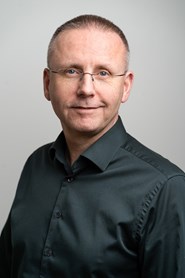
In my PhD thesis, published in 1997, I studied how large industrial investments have an impact on population and employment development in a regional setting. For municipalities and regions, large investments can potentially generate population growth and an increased number of jobs during both the construction phase and the following operation of the plants. One of the things we have learned from these studies is that local impacts – how socioeconomic effects of investments spread into the local economy – are affected by to what extent there is a good match between the goods, services and competences in demand, and the size and industry composition of the region. Generally, local impacts tend to be more considerable in regions having a large population and a more diversified local trade and industry.
After the PhD thesis, my research has extended in scope and taken new directions. As an example, the research on labour mobility and its effects on firm competitiveness through information dissemination and learning can be mentioned. Together with colleagues we have contributed to the development of theory on why there are regional differences in economic growth and innovation capacity. The outcomes of this work have shown that economic geography should not only consider the study of corporations, but also population and people in a broader sense. In particular, the emergence of a knowledge society has brought an understanding of the enhanced significance of individuals’ knowledge and experiences as a production factor in the economy. In this way, individuals’ preferences regarding their everyday lives and where to live play an increasingly more important role for regional development, and the prospects for employers to hire personnel in all the places where different operations need to be run, both in the private sector and the public sector.
Urbanisation has been the dominating population redistribution trend in Sweden during a long period of time, which has propelled population growth in metropolitan areas and regional centres. Moreover, increased population density has contributed to elevated demographic, socioeconomic and ethnic segregation, and more recently the long-term impacts of residential segregation have been highlighted. In an ongoing international and interdisciplinary research project – ‘Life at the Frontier’ – we study residential segregation conceptualized as sharp discontinuities between different groups of people in the urban landscape. The aim of the project is to investigate how upbringing in this type of border zones influence children’s labour market outcomes later in life. Previous studies suggest that exposure to residential segregation throughout childhood has an adverse effect on social mobility and the likelihood of moving upwards along the social ladder. This circumstance presumably affects people originating from other countries even more.
Apart from research interests briefly presented above, I have for a long time been interested in and involved with the development of research infrastructure. As early as in the beginning of the 1990s I contributed to the design of one of the first research databases having longitudinal demographic and socioeconomic register data covering the entire Swedish population. Early we realized the potential benefits of such data in terms of establishing international research networks and publications in high-ranked journals. In their call in 2008 aimed to strengthen Swedish register-based research (SIMSAM), the Swedish Research Council granted 28 million SEK to our research group enabling extended cooperation between scholars from epidemiology, occupational medicine, sociology, statistics, and geography. One important objective was to create a new research infrastructure supporting scholars interested in research on health and welfare of children and adolescents in a life-long perspective. This work resulted in the formation of Umeå SIMSAM Lab, which today is a venue for many different research groups. These groups have access to individual-level register data of the entire Swedish population linking demographic and socioeconomic data with health-related data from registers administered by the National Board of Health and Welfare, and various regional and national health-related data sources.
Academic merits
Professor of Human Geography (2008)
Associate Professor (2004)
PhD (1997)
Management, Administrative Positions and Awards
Review panel member (HS-B), Humanities and Social Sciences at the Swedish Research Council (2022)
Member of the Board of Directors, Forte – Swedish Research Council for Health, Working Life and Welfare (2016-2021)
Member of the steering group of SND (Swedish National Data Service) (2020-2021)
Head of Department/Associate Head of Department, Department of Geography/Department of Geography and Economic History/Department of Social and Economic Geography, Umeå University (2011-2019)
Scientific Secretary of the Regional Ethical Vetting Board, Umeå (2012-2018)
Chairman of the Board of Directors, CERUM (Centre for Regional Science), Umeå University (2008-2014)
Nordea Scientific Award (2013)
Umeå University’s Young Researcher Award (2009)
Director of Postgraduate Studies (2002-2005)
Director of Undergraduate Studies (1998-2001)